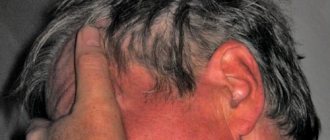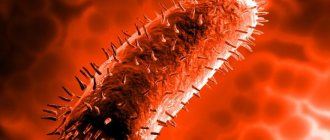Obsessive-compulsive disorder is a specific condition in which the patient suffers from fears, doubts and obsessive thoughts. This disease can be cured, but it will require long-term and serious work. Stable remission can only be achieved through the work of a qualified and experienced psychotherapist with the patient. During the treatment process, the doctor initially carries out diagnostic procedures. Thanks to this, it is possible to determine the main direction of individual treatment. It should be understood that patients are unlikely to be able to cope with the disease on their own. Therefore, even drug treatment may be required. The sooner you seek help from specialists, the faster you will be able to overcome this disorder.
Obsessive neurosis
Obsessive-compulsive neurosis is a psychiatric illness that is accompanied by frequent intrusive anxious thoughts. Patients do not have the ability to suppress them on their own. As a result, the problem is only beginning to gradually gain momentum and get even worse. People suffering from this disease often begin to perform peculiar rituals. For example, opening doors a certain number of times, turning lights on and off in a given rhythm. But a person fully understands the inadequacy of his actions and their negative consequences, but at the same time he cannot stop himself, repeating “traditions” again and again.
How to help children suffering from neuroses?
For neurosis in children, treatment should be comprehensive, adequate and timely. Under this condition, it is possible to completely stop the symptoms of a mental disorder. Treatment of neuroses in children of primary school age requires monitoring the mental load in children. When the first signs of a disturbance in the functioning of the nervous system appear, it is necessary to consult with a school psychologist and teachers.
Aromatherapy, pine baths and breathing exercises help to get rid of the manifestations of mental pathology. Older children can be taught yoga and meditation.
It is important to provide the child with feasible physical activity to relieve mental stress, but only if the development of mental pathology is not initially associated with overwork.
After consulting with a doctor in advance, it is advisable to give children decoctions of medicinal herbs with a sedative effect.
For obsessive neurosis in children, treatment involves regular visits to a child psychologist. The specialist individually selects methods to help get rid of a mental disorder; This could be art therapy, play therapy or fairy tale therapy.
The text was checked by expert doctors: Head of the socio-psychological service of the Alkoklinik MC, psychologist Yu.P. Baranova, L.A. Serova, a psychiatrist-narcologist.
CAN'T FIND THE ANSWER?
Consult a specialist
Or call: +7 (495) 798-30-80
Call! We work around the clock!
Obsessive Action Syndrome
Obsessive behavior syndrome can take three forms:
- One-time, which implies that the signs of neurosis can last for a long period, being at the same level of intensity.
- The remitting form characterizes a situation when signs of neurosis periodically worsen and then fade.
- The progressive form of neurosis implies that the symptoms only begin to worsen over time.
Obsessive behavior syndrome may occur due to the influence of biological factors, such as heredity or the presence of organic changes in the brain. But there are cases when acute psychological trauma and severe losses in a person’s life contribute to the disease. But obsessive actions can only arise in a patient if there is a biological tendency. If it is not there, the psyche reacts predominantly in a completely different way.
Obsessive behavior in adults
Experts divide manifestations of obsessive actions in adults into several categories, including:
- Classic tics, which are manifested by rapid movements of the head or neck. Also, tics of this type can also manifest themselves in sound, for example, constant mooing, coughing and much more.
- The stereotypical category includes frequent rocking in different directions, tapping fingers on the table surface, and jerking the leg. With such behavioral disorders, there are no prodominal signs that are harbingers of the onset of the disease.
- Behavioral disorders that cause physical harm to the patient - hair pulling, scratching or picking at skin, nail biting.
Such actions are performed unconsciously, since a person involuntarily performs certain actions. The tick stops for a while if requested by loved ones or if a situation arises that will distract from the “procedures.” However, after some time, this situation will certainly repeat itself again and again.
What are obsessive thoughts?
Obsessive thoughts torment a person, they are unpleasant and disturbing, you want to hide from them, run away. There are all kinds of obsessions.
Here are some examples of what intrusive thoughts can be:
- concerns about pollution and the spread of disease;
- pathological need for order and symmetry;
- obsessive and uncontrolled counting;
- obsessive thoughts about bad things: a person constantly thinks about accidents that could happen to him, to his loved ones, to his property, or even to humanity as a whole;
- groundless and unreasonable avoidance of certain actions or objects;
- thoughts of a religious, sexual, aggressive or any other nature that are alien to the patient’s thinking and arise against his will.
Constant intrusive thoughts cause unbearable discomfort. Of course, a person has a desire to succumb to these ideas and try to correct the situation. In this case, compulsions appear - actions that a person is forced to periodically perform, even if he does not want to, in order to control what is happening in his head. When intrusive thoughts (obsessions) and compulsive actions (compulsions) are present together, take a lot of time, interfere with life and cause suffering, this indicates the presence of a disease such as obsessive-compulsive disorder (OCD).
A person begins to avoid cracks in the asphalt or touch every tree on the road because alien thoughts “tell” him that if he does not do this, something bad will happen.
Usually compulsions force you to do something over and over again, like a ritual. By giving in to the compulsion, the person hopes that he can prevent or reduce the anxiety that accompanies the obsessions. For example, he begins to avoid cracks in the asphalt or touches every tree on the road because alien thoughts “tell” him that if he doesn’t do this, something bad will happen. Unfortunately, such actions do not bring relief and only get worse over time, taking the form of an endless ritual.
In addition to OCD, there are other diseases in psychiatry that are characterized by different types of obsessive thoughts. Here are some of them:
- phobias,
- neurasthenia,
- schizophrenia.
A phobia is an anxiety disorder characterized by panic and an uncontrollable, irrational fear of certain situations or objects. Severe anxiety can arise even when thinking about a frightening situation, so the patient tries with all his might to avoid the scary object. All terrible obsessive thoughts and anxieties are associated exclusively with this object.
There are different types of phobias. The most common:
- agoraphobia - fear of open spaces or places with large crowds of people;
- social phobia is the fear of social interactions. There are other specific phobias that can relate to anything: airplanes, specific animals, the type of blood.
A phobic disorder may include panic attacks - attacks of fear that are accompanied by a feeling of approaching death and physical sensations: chest pain, heart palpitations, dizziness, a feeling of shortness of breath, numbness of the limbs, intestinal disorders. All this significantly limits a person’s personal life and performance.
Neurasthenia is a disorder that is associated with depletion of the nervous system. It occurs after a long illness, physical overload, severe or prolonged stress. Characterized by constant headache, symptoms of cardiovascular disorders, digestive and sleep disorders.
Intrusive delusional thoughts can be one of the manifestations of schizophrenia, but the diagnosis is made only if other signs of schizophrenia are present.
The disease has three forms-stages, which develop one after another. In the hypersthenic form, emotional lability, irritability and intolerance are observed. In the second phase, called “irritable weakness,” aggression and irritation are quickly replaced by emotional exhaustion and impotence. In the third, hyposthenic form, the patient arrives in a state of constant fatigue and bad mood. He focuses on his inner feelings, which depresses him even more. This phase is characterized by obsessive thoughts of a hypochondriacal nature.
Schizophrenia is a complex, polymorphic mental illness characterized by a fundamental disturbance of perception and the breakdown of thought processes. The clinical picture is varied and depends on the form of the disease: hallucinations, delusions, loss of natural mental functions, personality distortion and much more.
A sick person who suffers from this illness needs full treatment from a psychiatrist. Intrusive delusional thoughts can be one of the manifestations of schizophrenia, but the diagnosis is made only if there are other signs that are specific, diagnostically significant criteria for this disorder.
Obsessive behavior in children
Obsessive behavior in children is a fairly common problem that many parents face. The disorder most often manifests itself when the child constantly bites his nails, twirls the hair on his fingers, and picks his nose. After repeated comments, the situation does not improve at all, repeating itself again and again. In this case, we are not talking about simple habits at all, but about neurosis. Therefore, it is quite difficult to deal with obsessive actions.
There can be many reasons for the manifestation of this type of illness, including divorce of parents, great fear of dog bites, or, for example, a child was once very scared because he almost drowned while swimming. Also, the reasons may be physiological, for example, after sinusitis in an advanced stage, which resulted in chronic intoxication of the body. It is important to start dealing with the situation in a timely manner, since fears that manifest themselves in childhood can develop into severe phobias after reaching adulthood. Therefore, if you notice regular habits in your child, such as tugging at the earlobe, cracking fingers, or any other actions that occur with enviable regularity, it is important to contact a specialist in a timely manner.
Causes of OCD
At the moment, it is not possible to name the exact reasons for the appearance of OCD. Theories and assumptions about the origin of the disease include biological, psychological and social causes.
It has been proven that the most common cause is a biological one, which includes genetic inheritance, pathology of the nervous system, diseases caused by infections, head and brain injuries, and changes in metabolism. And a psychological reason. It includes trauma in personal relationships, too harsh upbringing, fear of a threat to life.
Mom bullies daughter
It is quite common for people who became ill in childhood to have relatives with a similar disease, compared to those who became ill as adults. Often the causes of the disease include streptococcal infections, such as tonsillitis, glomerulonephritis, and rheumatism. Also, people who are anxious, with signs of mental disorders, and neuroses are more prone to OCD.
Obsessive behavior after stroke
A stroke is a disruption of blood circulation in the brain that results in necrotic damage to nerve cells. Recovery from a stroke is a long process, during which a person will need to relearn basic things - talk, walk and even eat. This condition takes a toll on the patient’s psyche. As a result, it is not at all uncommon for obsessive behavior to occur after a stroke. In this case, a person often simply refuses to make any efforts to improve his condition. It seems to the patient that everything should go away on its own. A person is often completely confident that he can return to his previous life without any problems. When faced with failures, the result is deep depression and nervous breakdowns. This affects not only the patients themselves, but also their loved ones, who are unable to provide proper assistance on their own. Patients require 24-hour medical supervision. The patient needs the help of a qualified psychotherapist and psychologist, since difficult work lies ahead, the goal of which is to restore the person’s desire for life and the desire to achieve more and more success. Drug treatment for obsessive-compulsive disorders is used quite rarely, since a person under the influence of anidepressants loses the so-called “fighting spirit”. The work is carried out mainly in the form of dialogue with the doctor.
Children's and teenage interests
In children aged two to three years, certain rituals are possible that accompany the child, for example, before bedtime, and this is normal; such manifestations disappear as the child grows older.
Interest in games with certain rules appears from the age of 5, and in collecting from the age of 6-7 years. Adolescence can be accompanied by a passion for idols and subcultures, and this is also the norm. Thus, socialization takes place, relationships are built with teenagers with the same hobbies; such interests are rarely hidden.
Treatment of obsessive behavior
When treating obsessive-compulsive disorders, an integrated approach will be required, which includes psychotherapy, during which a specialist works individually with the patient, drug treatment to correct anxieties and fears, and multiple modern relaxation techniques. Thanks to individual psychotherapy sessions, it is possible to determine the reasons why a person got into this situation. In the case when the patient begins to understand what exactly is the cause of obsession, the situation is much easier to control.
Thanks to cognitive behavioral therapy, you can achieve excellent results after just a couple of sessions. The doctor teaches his patient to detect and change negative attitudes to more optimistic ones. Thanks to this, the patient begins to gradually control his behavior, coping with a stressful situation.
Drug treatment is a last resort. For this type of therapy, patient consent is required. Antidepressants, anxiolics, which help fight anxiety, and sedatives, which can help overcome depression and increased anxiety in a shorter period, are taken as medications. As a result, sleep gradually normalizes and the patient’s general condition improves. Treatment must be carried out until the disease is completely defeated. That is, the course lasts until the patient is unable to independently control the disorder and all symptoms of the disease disappear completely.
If you are faced with this difficult situation, you must definitely contact a specialist. Our Salvation clinic has created the best conditions for a favorable exit from a neurotic state. Our staff consists of qualified psychotherapists who have extensive practical experience. Specialists practice the latest effective techniques, through the use of which you can achieve good results in a short time.
What can a parent do?
- understand what OCD is, its causes and myths,
- find a suitable psychotherapist for correction,
- learn to recognize and respond to symptoms,
- Don't blame yourself for your child's OCD; even the worst upbringing does not cause this disorder,
- do not scold the child; It's not your child's fault, he's not trying to get attention or doing it on purpose.
- you and your child deserve relief from the symptoms of the disorder that disrupt normal family life, friendships, and schooling. By receiving psychotherapy, your child can learn to manage OCD symptoms.
There is currently no cure for OCD. However, just as a child with asthma, allergies, or diabetes learns to manage their condition through treatment, a child with OCD can learn to manage OCD symptoms.







